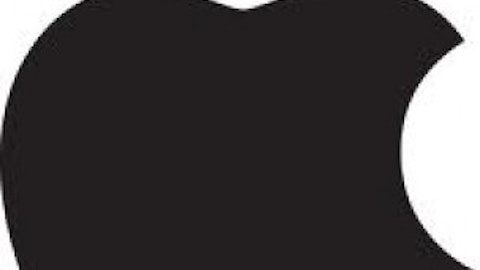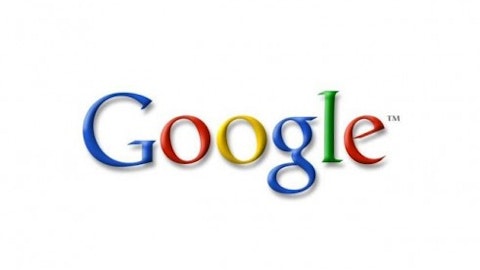As the company who created the tablet market, revolutionized music, and invented smartphones, Apple Inc. (NASDAQ:AAPL) seemed invincible. But times are different now. Since Steve Jobs’ death, Apple Inc. (NASDAQ:AAPL)’s hold on consumers slowly eroded. The process certainly is not “overnight,” but the evidence is becoming clearer over time: Apple’s current strategy, and its app standards, need to change for the firm’s continued success.
iPhones are missing out on emerging markets
Competitors running the Android operating system pose a great threat to Apple Inc. (NASDAQ:AAPL). Phones running Android operating systems, such as Nokia and Samsung (NASDAQOTH:SSNLF), saw a jump in market share in the second quarter from 69.1% to 79.3%. iPhones, on the other hand, saw a market share decrease from 16.6% to 13.2%.

Source: IDC
Part of Samsung’s and Nokia’s success comes from a focus on emerging markets. With their large populations and growing personal income, emerging markets provide many new smartphone customers. Nokia, for instance, sees special success in India with its Lumia line of phones. Excluding North American sales, Nokia sold 8.5 million Lumia phones in 2012. This year Nokia sold 5.2 million and 6.9 million Lumia phones in the first and second quarters, respectively, excluding North American sales. And that number is widely expected to ramp up as consumer incomes increase and as Nokia tailors its Lumia product family to fit the market. At present, Nokia is able to cater to a variety of income levels with its products, but I believe the firm has more revenue potential by more closely refining its products to compete in each income segment.
Samsung also appeals to global smartphone users, thanks to its wide variety of low-priced and high-end smartphones. Smartphones often sell for $390 – $450 in emerging markets, but phones like Samsung’s Galaxy S Duos and Nokia’s Lumia 920, which cost customers about $200 and $450 respectively, appeal to lower-end customers. That’s why such an opportunity exists for both firms in the fast-growing nation of India.
Apple Inc. (NASDAQ:AAPL) saw some success in its attempts in emerging markets. In June, Apple offered 18% cash discounts and 25% total discounts to customers in India. Lower prices helped increase monthly sales from 75,000 to 400,000 units. Despite this moment of success, the iPhone saw a continued decrease in non-American global shipments. Apple Inc. (NASDAQ:AAPL) saw a 30% decline from the first quarter to the second quarter in non-American global iPhone shipments.
Furthermore, selling to emerging markets does not fit into Apple’s strategy. Earning a 49% – 58% profit margin on its iPhones, Apple depends on high profit margins to make up for lagging shipments. Customers in emerging markets often call for low-priced phones, not up-scale ones. Therefore, if Apple Inc. (NASDAQ:AAPL) wants to expand sales, it must reevaluate its low-shipment, high-profit market strategy, potentially considering a lower-end phone to grab up market share. After all, if a decade from now income levels (and consumer tastes) were to increase as expected in emerging markets, consumers will be far more used to Nokia and Samsung phones, offering these firms an opportunity to pitch higher-end products to the same customers.
Finally, note that revenues from smartphones comprise a considerable portion of phone maker’s total:
| Company | Mobile Division Total Sales as a% of Net Sales in Q2 |
|---|---|
| Apple | 52.7% |
| Nokia | 20% |
| Microsoft | 10.4% |
Source: Companies’ 10-Qs
Unimpressive apps
Designed to be “easy to use” with self-explanatory icons, Apple’s iPhone apps created a new, unspoken mobile standard. As consumers become more tech savvy, the demand for such simple apps fades. Consumers now look to more sophisticated apps that can accurately collect and adapt to new data. Unfortunately, Apple has a history of dropping the ball. Apple’s mapping blunder aside (where CEO Tim Cook recommended using other mapping apps instead of Apple’s buggy one), let’s take a closer look at Apple’s Siri and Google Now, Google’s personal assistant and search app.
Apple provides iPhone 4s and iPhone 5 users with Siri, the interactive voice recognition software that helps users search their devices and acquire answers. Siri impressed many users with her smooth voice and assistance. However, Google Inc (NASDAQ:GOOG)’s technology may now push her by the wayside.
Google Inc (NASDAQ:GOOG) proves it can develop sophisticated apps. In the most recent Android operating system (Jelly Bean), Google Now is equipped with better voice recognition software than Siri. Further, the software improves with continued app use. Developers of Google Inc (NASDAQ:GOOG)’s voice recognition software managed to cut errors by 25% from the last Android operating system, Ice Cream Sandwich. The technology imitates the method in which neurons in the human brain identify patterns and participate in thinking. This allows the software to better understand the user’s accent and speech the more he uses the app. Google Inc (NASDAQ:GOOG) Now is available on both Android phones running Jelly Bean and Apple Inc. (NASDAQ:AAPL)’s app store.
Siri takes a more mechanical approach to its voice recognition. As the user speaks, the software compresses the words into a digital audio file. Then it compares that file to a statistical model usually on the cloud, allowing the software to convert the audio into letters. Therefore, Siri does not adapt to the user’s speech and accent over time.
Beyond Google Now, Android app sales continue to grow beyond expectations. Google Inc (NASDAQ:GOOG)’s app store brought in 38.5% of Apple’s revenues, a great increase from the 10% Google brought in last year. iOS apps still bring in more revenue, 130% more than Google Play, but Google’s current growth provides much promise. To conclude, here’s a startling statistic: according to BGR Media, Google’s app store users currently download 90% of Apple’s downloads.
Google does not disclose revenue figures for Google Inc (NASDAQ:GOOG) Play. However, we do know that Google Play revenue continues to increase through third party reporters App Annie and Distimo.

If Apple wants to continue to impress users with its apps, like it did when Siri first came out, it’s time for software upgrades.
Conclusion
As the firm misses the mark in emerging markets and falls behind in app innovation, we start to see the cracks in the fortress called Apple. As a well-established name brand with large profit margins, this firm’s end will not come anytime too soon. However, it’s not too far of a stretch to consider that Apple Inc. (NASDAQ:AAPL) is off of its pedestal and now on the same playing field as the other major competitors. In short, Apple’s running out of juice.
The article Why Apple Is Running Out of Juice originally appeared on Fool.com and is written by Marie Palumbo.
This article was written by Michele Milheim and edited by Chris Marasco and Marie Palumbo. None have a position in any stocks mentioned. The Motley Fool recommends Apple and Google. The Motley Fool owns shares of Apple and Google.
Copyright © 1995 – 2013 The Motley Fool, LLC. All rights reserved. The Motley Fool has a disclosure policy.





